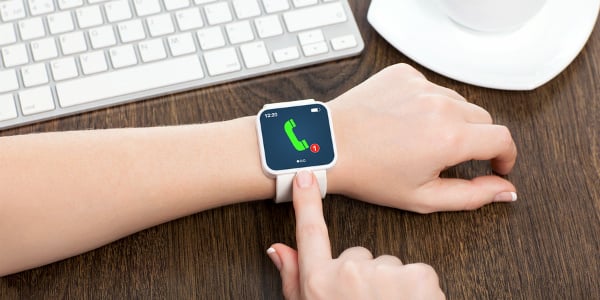Maybe the Smartwatch isn’t so smart

There is plenty of talk in the Fintech space about how financial institutions need to consider jumping in on the “wearable” bandwagon. I am not against mobile technology and in fact, am a huge fan. But seriously, if you think the masses are going to use any watch to do their banking or flick their eyes in Google Glass to pay their bills, I personally think you are overestimating the current appeal of these devices.
I first started hearing about smart watches in 2010 when a small, nameless company announced a kickstarter campaign to tout their smartwatch and raise some much needed funds. Since I learned about smartwatches, I have asked myself “why the heck would I want to wear one of these things?” I really wanted a reason to like one or at least try one on. 4 years later, even after several smartwatches have hit the market, I still don’t want one. And neither does my 15 year old son or 17 year old daughter. In fact, I know not a single person that has one, or at least admits to having one.
The smartwatch is not a new concept. Dick Tracy wore one in the 1940s and used it as two way radio. Then in 1982, David Hasselhoff as Michael Knight in Knight Rider, sported a smartwatch and also used it for 2 way conversions. Even Inspector Gadget used one, way back in 1983. Face it, we all aspire to be as cool as David Hasselhoff and Inspector Gadget, right? Wrong. Ask any teen if they’d wear a smartwatch and you’ll get an answer such as, “why do I want to look like a dork,” or “a watch is a piece of jewelry, and some computer strapped on my wrist is not jewelery.” And seriously, are any of the current smartwatch designs going to appeal to women? Ask a woman. 100% of the women I asked said they had no interest in wearing a smartwatch (I asked 4 women).
In June 2000, IBM displayed a prototype for a wristwatch that ran Linux. It was the first attempt to bringing mobile computing to the wrist. The first model had only 6 hours of battery life, which was later extended to 12. It stored 8MB of memory and ran Linux 2.2. A later model was upgraded with an accelerometer, a “vibrating” mechanism, and even a fingerprint touch sensor. IBM collaborated with Citizen Watch Co. and created the “WatchPad”. The WatchPad 1.5 featured a 320 × 240 QVGA display and ran Linux 2.4. It even had calendar software, Bluetooth, 16 MB of flash memory. Citizen planned to market the watch to students and businessmen. The project was discontinued between 2001–2002.
The smartwatch does not really solve a fundamental problem for us. Unlike Activity Trackers such as Fitfit, which are seeing success as wrist wearables, they have a clear use case that isn’t easily duplicated by smartphones. I question the most basic smartwatch usability. If you are like the majority of us, you have two hands. Well, not with a smartwatch. It is impossible to type anything useful into a smartwatch, other than a simple button entry, with just one hand. Now we could use voice translation to translate what we say into text, but we know how reliable voice recognition is. Imagine trying to spell check on a smartwatch. Oh, the joy. Sure, you can talk into your smartwatch as it sits on your wrist. But how private will that phone conversation be? And of course your Dick Tracy impersonations will all be public because it’s using a speakerphone. Oh, wait. Perhaps you can also use Bluetooth with a headset, just like your smartphone. But seeing how a smartwatch is a Bluetooth device, I’m not sure that will work. Maybe you can use wired ear buds with your smartwatch? Yep, you’d really look cool with your head tethered to your wrist.
With Apple planning an October launch of iWatch, I am a little more curious about the future of smartwatches. If anyone can pull it off, it will be Apple. Perhaps there is some usefulness in smartwatch based banking apps. I could see a smartwatch that serves up calendar reminders, like when a bill is due or a warning that a credit card is about to be maxed out or an overdraft is about to occur. Ideally a smartphone app supplements the smartphone app in some way. Eventually I expect that I’m going to be using my smartphone as a digital wallet, so I could envision the smartwatch integrated with Passbook. Swiping a transaction with my wrist could be appealing, because it’s really difficult reaching into my pocket and retrieving my iPhone. Ok, maybe not so much.
For smartwatches to succeed, they need to serve a specific purpose or use case. I think that is possible. But they also need to be fashionable, and we have a long way to go before that happens.





